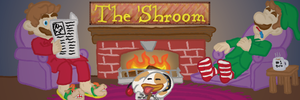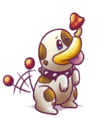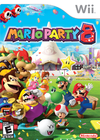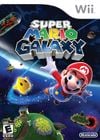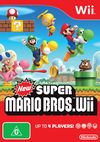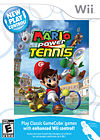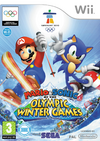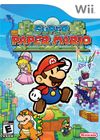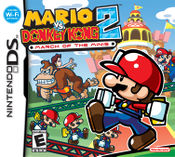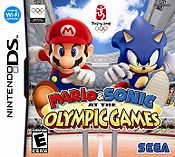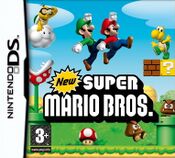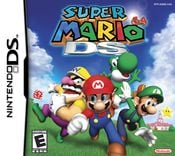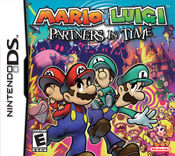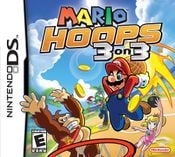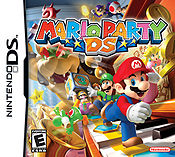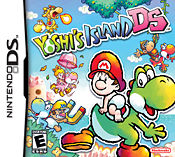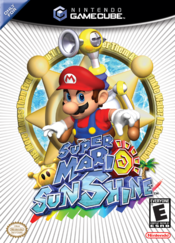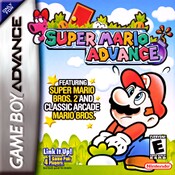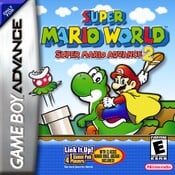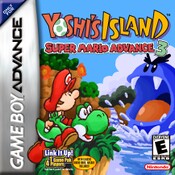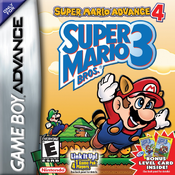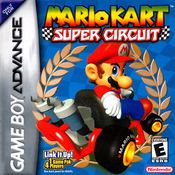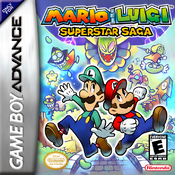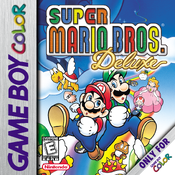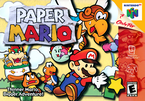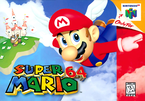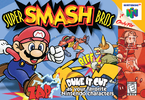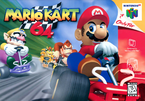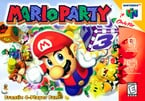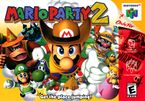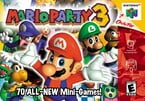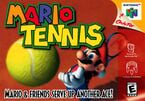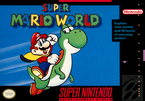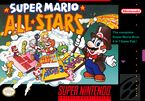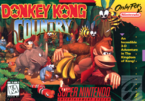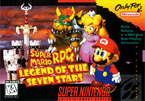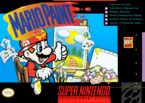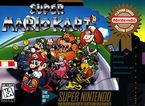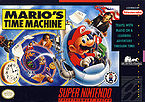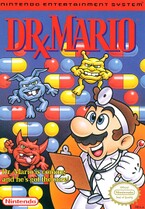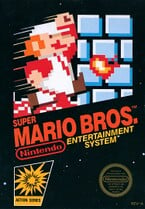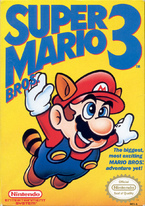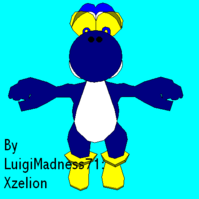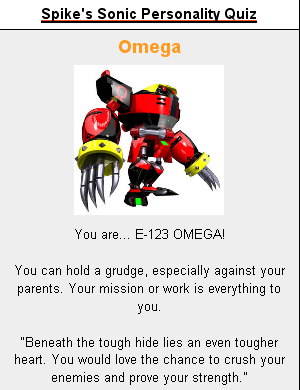User:LuigiMadness71: Difference between revisions
m (Text replacement - "\[\[(:)?Image:" to "[[$1File:") |
(fixing broken links) |
||
| Line 52: | Line 52: | ||
*[[File:Ztar2.jpg|16px]] = Complete Almost | *[[File:Ztar2.jpg|16px]] = Complete Almost | ||
*[[File:RedStarIcon.gif|16px]] = I'm Rubbish | *[[File:RedStarIcon.gif|16px]] = I'm Rubbish | ||
*[[File:MPA Boo.jpg|16px]] = Impossible to Complete | *[[File:MPA Boo Artwork.jpg|16px]] = Impossible to Complete | ||
I havent put things on all of them, only the first 2 | I havent put things on all of them, only the first 2 | ||
| Line 200: | Line 200: | ||
!''[[Super Mario Advance (series)#Super Mario World: Super Mario Advance 2|Super Mario Advance 2]] | !''[[Super Mario Advance (series)#Super Mario World: Super Mario Advance 2|Super Mario Advance 2]] | ||
---- | ---- | ||
[[File:Super Mario Advance 2 | [[File:Box Art NA - Super Mario World Super Mario Advance 2.jpg|175px|]] | ||
|As the name suggests, Super Mario World: Super Mario Advance 2 features Super Mario World. It was the second video game in the Super Mario Advance series, and was released for the Game Boy Advance in 2001. | |As the name suggests, Super Mario World: Super Mario Advance 2 features Super Mario World. It was the second video game in the Super Mario Advance series, and was released for the Game Boy Advance in 2001. | ||
|- style=font-size:8pt align=center | |- style=font-size:8pt align=center | ||
| Line 212: | Line 212: | ||
!''[[Super Mario Advance (series)#Super Mario Advance 4: Super Mario Bros. 3|Super Mario Advance 4]] | !''[[Super Mario Advance (series)#Super Mario Advance 4: Super Mario Bros. 3|Super Mario Advance 4]] | ||
---- | ---- | ||
[[File: | [[File:Super Mario Advance 4 Box.png|175px|]] | ||
|In 2003, the fourth and final entry in the Super Mario Advance series, Super Mario Advance 4: Super Mario Bros. 3 was released for the Game Boy Advance. It was actually a heavily updated version of Super Mario Bros. 3 as the name suggests. However, it boasted similar graphics and sound to the All-Stars version. It features a save system similar to the Super Mario All-Stars save system, except temporary saves may now be done anywhere. | |In 2003, the fourth and final entry in the Super Mario Advance series, Super Mario Advance 4: Super Mario Bros. 3 was released for the Game Boy Advance. It was actually a heavily updated version of Super Mario Bros. 3 as the name suggests. However, it boasted similar graphics and sound to the All-Stars version. It features a save system similar to the Super Mario All-Stars save system, except temporary saves may now be done anywhere. | ||
This game's largest added feature was compatibility with the e-Reader and e-Cards. These cards could be scanned in to the game, and would function as new levels, instant power-ups, or demos. One power-up card features a power-up that cannot be found in any other Mario game: the Boomerang. | This game's largest added feature was compatibility with the e-Reader and e-Cards. These cards could be scanned in to the game, and would function as new levels, instant power-ups, or demos. One power-up card features a power-up that cannot be found in any other Mario game: the Boomerang. | ||
| Line 245: | Line 245: | ||
!''[[Super Mario Bros. Deluxe]] | !''[[Super Mario Bros. Deluxe]] | ||
---- | ---- | ||
[[File: | [[File:SMB Deluxe cover art.png|175px|]] | ||
|Super Mario Bros. Deluxe, released on the Game Boy Color in May of 1999, was a remake of the 1985 Super Mario Bros. and 1986 Super Mario Bros.: The Lost Levels games. It was released fourteen years after the original Super Mario Bros.. | |Super Mario Bros. Deluxe, released on the Game Boy Color in May of 1999, was a remake of the 1985 Super Mario Bros. and 1986 Super Mario Bros.: The Lost Levels games. It was released fourteen years after the original Super Mario Bros.. | ||
|- style=font-size:8pt align=center | |- style=font-size:8pt align=center | ||
| Line 284: | Line 284: | ||
!''[[Mario Golf]] | !''[[Mario Golf]] | ||
---- | ---- | ||
[[File: | [[File:Mario Golf 64 box.png|145px]] | ||
|Mario Golf is a video game for the Nintendo 64 released by Nintendo in 1999. It was developed by Camelot Software Planning. | |Mario Golf is a video game for the Nintendo 64 released by Nintendo in 1999. It was developed by Camelot Software Planning. | ||
Though several sports games featured Mario characters in the past, Mario Golf is considered the first game in the modern "Mario Sports" line. It would be followed by several titles encompassing a variety of sports. | Though several sports games featured Mario characters in the past, Mario Golf is considered the first game in the modern "Mario Sports" line. It would be followed by several titles encompassing a variety of sports. | ||
| Line 291: | Line 291: | ||
!''[[Mario Party]] | !''[[Mario Party]] | ||
---- | ---- | ||
[[File: | [[File:MP1 Cover.jpg|145px]] | ||
|Mario Party is a video game based on a board game, and the first of the expansive Mario Party series. Players choose one of six characters and move around the board. As they go around, they collect coins and various other items that can help them or hinder others in their quest to collect Stars. | |Mario Party is a video game based on a board game, and the first of the expansive Mario Party series. Players choose one of six characters and move around the board. As they go around, they collect coins and various other items that can help them or hinder others in their quest to collect Stars. | ||
|- style=font-size:8pt align=center | |- style=font-size:8pt align=center | ||
| Line 309: | Line 309: | ||
!''[[Mario Tennis (Nintendo 64)|Mario Tennis]] | !''[[Mario Tennis (Nintendo 64)|Mario Tennis]] | ||
---- | ---- | ||
[[File: | [[File:Mario Tennis 64 box art.jpg|145px]] | ||
|Mario Tennis is a Nintendo 64 video game. It features Mario and his friends playing tennis. It was originally going to be called Mario's Dream Tennis, but was changed for unknown reasons. This game marked the debut of Waluigi, and also Princess Daisy and Birdo's re-entries into the Mario series. The Game Boy Color counterpart is Transfer Pak compatible with Mario Tennis. | |Mario Tennis is a Nintendo 64 video game. It features Mario and his friends playing tennis. It was originally going to be called Mario's Dream Tennis, but was changed for unknown reasons. This game marked the debut of Waluigi, and also Princess Daisy and Birdo's re-entries into the Mario series. The Game Boy Color counterpart is Transfer Pak compatible with Mario Tennis. | ||
|- style=font-size:8pt align=center | |- style=font-size:8pt align=center | ||
| Line 334: | Line 334: | ||
!''[[Donkey Kong Country]] | !''[[Donkey Kong Country]] | ||
---- | ---- | ||
[[File: | [[File:Boxart dkc front.png|145px]] | ||
|Donkey Kong Country (Super Donkey Kong in Japan) is a game for the Super Nintendo Entertainment System, and was released in 1994. The game is known for being the first game to use pre-rendered sprites, creating a 3D effect throughout the game. | |Donkey Kong Country (Super Donkey Kong in Japan) is a game for the Super Nintendo Entertainment System, and was released in 1994. The game is known for being the first game to use pre-rendered sprites, creating a 3D effect throughout the game. | ||
|- style=font-size:8pt align=center | |- style=font-size:8pt align=center | ||
| Line 340: | Line 340: | ||
!''[[Super Mario RPG: Legend of the Seven Stars]] | !''[[Super Mario RPG: Legend of the Seven Stars]] | ||
---- | ---- | ||
[[File: | [[File:Super Mario RPG Box.png|145px]] | ||
|Super Mario RPG: Legend of the Seven Stars (known simply as Super Mario RPG in Japan) is a role playing video game designed by Squaresoft (currently Square Enix) and released for the Super Nintendo in 1996. It was the first Mario role-playing game, and worked out fairly well with an action-command battle system. In this game, Mario, with the help of four other characters, needs to stop a new enemy, Smithy, while collecting seven Star Pieces so that peace may return and wishes may be granted once more. | |Super Mario RPG: Legend of the Seven Stars (known simply as Super Mario RPG in Japan) is a role playing video game designed by Squaresoft (currently Square Enix) and released for the Super Nintendo in 1996. It was the first Mario role-playing game, and worked out fairly well with an action-command battle system. In this game, Mario, with the help of four other characters, needs to stop a new enemy, Smithy, while collecting seven Star Pieces so that peace may return and wishes may be granted once more. | ||
|- style=font-size:8pt align=center | |- style=font-size:8pt align=center | ||
| Line 390: | Line 390: | ||
!''[[Super Mario Bros.]] | !''[[Super Mario Bros.]] | ||
---- | ---- | ||
[[File:SMB | [[File:SMB USA box art.jpg|145px]] | ||
|Super Mario Bros. (known as Super Mario in Super Mario All-Stars, Japanese スーパーマリオブラザーズ Super Mario Brothers) is the semi-sequel to Mario Bros., a game which was released for the Famicom on September 13, 1985, and on the Nintendo Entertainment System in North America in late 1985 or 1986. This is the first game to be set explicitly in the Mushroom Kingdom, marking the first appearances of Bowser and Princess Toadstool, as well as Koopa Troopas, Goombas and many other Mario series enemies. Super Mario Bros. is the best selling video game of all time until recently when it was surpassed by Wii Sports., and was largely responsible for the initial success of the Nintendo Entertainment System. As of 2003, the game has sold more than 40.23 million copies worldwide, making it the second best selling video game of all time. | |Super Mario Bros. (known as Super Mario in Super Mario All-Stars, Japanese スーパーマリオブラザーズ Super Mario Brothers) is the semi-sequel to Mario Bros., a game which was released for the Famicom on September 13, 1985, and on the Nintendo Entertainment System in North America in late 1985 or 1986. This is the first game to be set explicitly in the Mushroom Kingdom, marking the first appearances of Bowser and Princess Toadstool, as well as Koopa Troopas, Goombas and many other Mario series enemies. Super Mario Bros. is the best selling video game of all time until recently when it was surpassed by Wii Sports., and was largely responsible for the initial success of the Nintendo Entertainment System. As of 2003, the game has sold more than 40.23 million copies worldwide, making it the second best selling video game of all time. | ||
|- style=font-size:8pt align=center | |- style=font-size:8pt align=center | ||
| Line 456: | Line 456: | ||
If you need my friend userbox just take this | If you need my friend userbox just take this | ||
{{userbox|border=#00FF00|mainbkgd=#66FF66|codebkgd=#00FF00|codecolor=#000000|code=[[File: | {{userbox|border=#00FF00|mainbkgd=#66FF66|codebkgd=#00FF00|codecolor=#000000|code=[[File:SPM Dark Pigarithm Catch Card.png|50px]]|msg=This user is friends with '''[[User:LuigiMadness71|LuigiMadness71]]''', the professional [[Pigarithm]] hunter}} | ||
Code: | Code: | ||
Latest revision as of 17:36, June 4, 2024
|
Status:Everybody is saying this 'school' thing. What is it? (Let me guess ANNOYING!
My UserPage!!!!!! I'm getting my stuff back bit by bit! YEAY!
| |||||||||||||||||||||||||||||||||||||||||||||||||||||||||||||||||||||||||||||||||||||||||||||||||||||||||||||||||||||||||||||||||||||||||||||||||||||||||||||||||||




 Catch Card
Catch Card </hide></showhide>
</hide></showhide>
